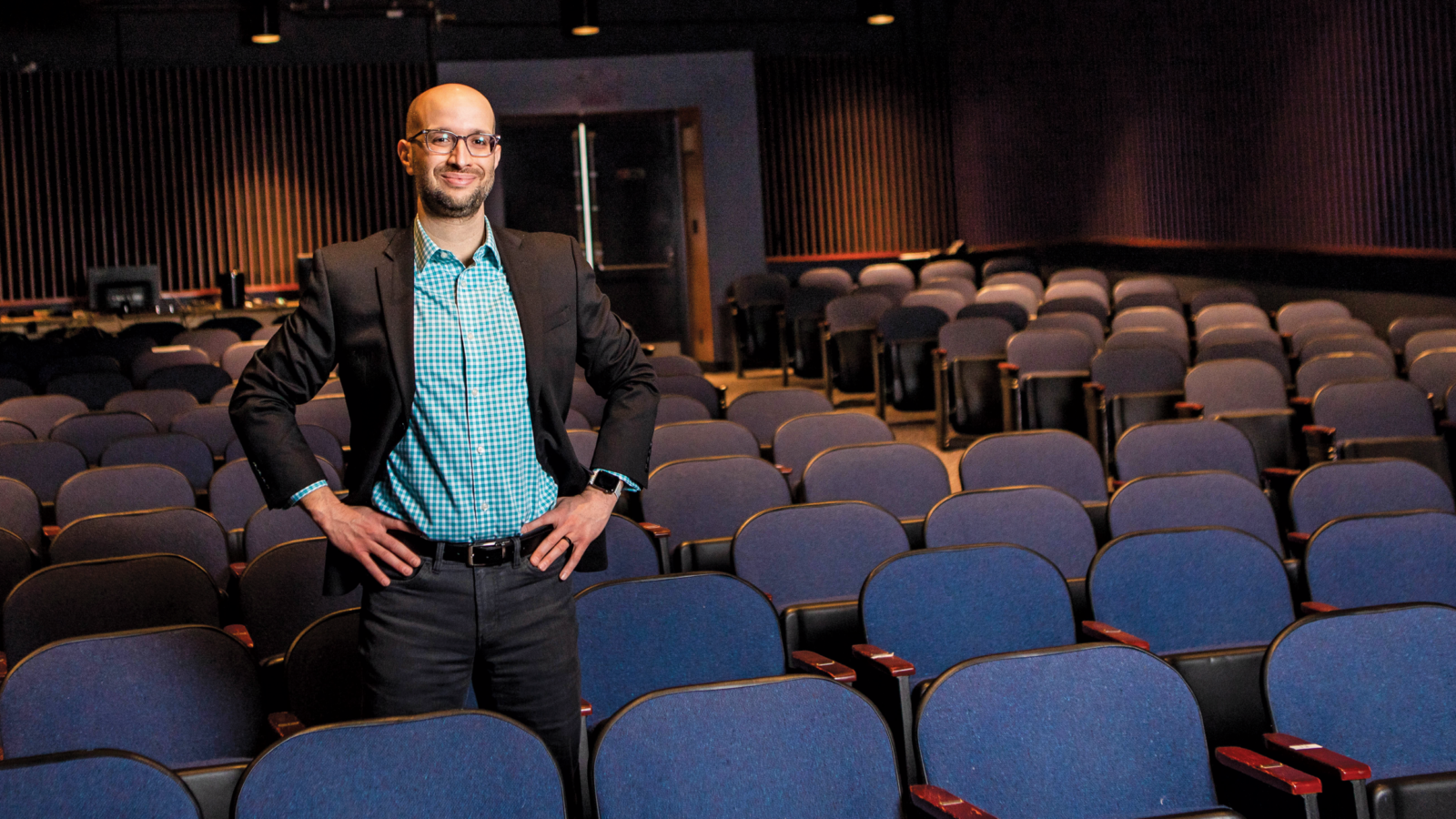New Theater Director Jorge Rodríguez aims for transformation, for both the audience and student actors
This fall, after longtime Theater Director Emily Ditkovski left to pursue graduate school full time, Williston was excited to announce Jorge Rodríguez as its new Theater Director. Rodríguez, who formerly led the theater program at Pioneer Valley Performing Arts Charter Public School (PVPA), came in prepared to carry on the long tradition of theater at Williston and to shepherd a program where students feel safe to take risks on stage, and work hard to master the elements of performance, all the while collaborating with their peers. It’s a vision that was born through his early exposure to the dramatic arts.
Rodríguez grew up in Puerto Rico and, as a child, loved movies and television shows, leading his parents to enroll him in a local theater camp. After a rocky first few weeks, Rodríguez became hooked on acting. That camp experience set him on the path—college at Haverford, M.F.A and D.F.A. from Yale School of Drama, and seven years at PVPA—that led him to Williston. Despite his being “incredibly, painfully shy” as a child, playing roles on stage allowed him a means of expression that he grew to love. “Transforming myself into someone else and being able to express myself in a new way—that for me was really liberating,” he said.
As Rodríguez works with Williston students, he sees them likewise wrestling with how much of themselves to share. With this vulnerable age group in mind, he is determined to create an experience that emphasizes collaboration over competition. Within that community, he hopes to impart the many skills of performance and to motivate students to work as a team. For this year’s seventh graders, who wrote monologues based on their identities and then performed them for a small audience, the approach took hold.
“It was really great to see how, when we were rehearsing, they were trying to make sure that not only had they memorized their own lines, but that everyone had memorized their lines—so that the show would have that sense of flow. They were taking pride in the collective work.”
Each year, eighth graders stage an entire Shakespeare play, and this year it was The Tempest. The group spent time understanding and analyzing character, story, and theme, and wrapped up the year looking at elements of design. Rodríguez also introduced a project in which eighth graders step into the role of directors, creating concepts for different productions that they then have to pitch to each other. Then they mock up ground plans and thumbnails for the set and costumes, and for their final project, present their visions to fellow students. “They have to take ownership of their ideas and answer questions to defend what they’re doing,” Rodríguez added.
All these exercises are expanded on in the Upper School. One recent example: fight choreography. “We studied safe stage combat practices and then built fight combos so that they could integrate those into the performance. Perhaps not surprisingly, they loved beating the heck out of each other—or pretending to on stage,” he said, laughing.
As Rodríguez finishes out his first year at Williston, he’s introducing into next year’s curriculum a new class on playwriting and screenwriting that helps writers distinguish between scripts for the stage and screenplays for movies or television. In this class, he hopes to help students understand that the mechanics of character development, storytelling, and conflict development are essentially the same for each
medium, even if they present different limitations and opportunities.
He’s also helping advanced students conceive, develop, and present work in his trimester-long Williston Scholars theater class, with an emphasis on producing a polished finished product—or a well-conceived idea that could be a seed for a future endeavor. “We want to make sure that the students take away that process of refinement, understanding how long it really takes to create something, whether you’re writing a play or a song, or choreographing a dance.”
As his first year comes to a close, and with two well-received plays—dramatic Metamorphoses and full-of-fun musical Mamma Mia!—under his belt, Rodríguez offers an encouraging summary of what theater brings to our lives.
“The theater is a place for us to enjoy the beauty of performance, to be able to have a moment of escape and be liberated by the world that exists on stage— this little cosmos that we’re creating as artists. If we’re doing our job, we can also help the audience come in and transport themselves to another realm.”
DEEP ROOTS
Rodríguez takes the reins from a storied group of theater directors
Curtain Up
While student actors at Williston Academy had put on plays for years, Williston Theater made its official debut as the Dramatic Club in December 1919 with an evening of three one-act plays. Full of youthful energy and longing to shake up the status quo, Lawrence Smith led the new department for three years.
Enter Boardy
Howard Boardman, affectionately known as “Boardy,” took over in 1921. For 38 years, he ran the show, moving away from pirate adventures and melodramas and endeavoring serious drama. The Williston Theater in newly built Scott Hall was dedicated as the Howard G. Boardman Auditorium when he retired in 1959.
Ensemble Cast
In 1942, Northampton School for Girls players began annual joint productions with Williston Academy boys. With few exceptions, the two schools performed together each year until they merged in 1971.
Scene Change
Ellis Baker ’51 ushered the theater through a second golden age after Boardy. He mentored many future stage professionals and was much beloved, as was Emily Ditkovski, who joined the cast in 2009. She led the department through the pandemic, when productions turned virtual.

